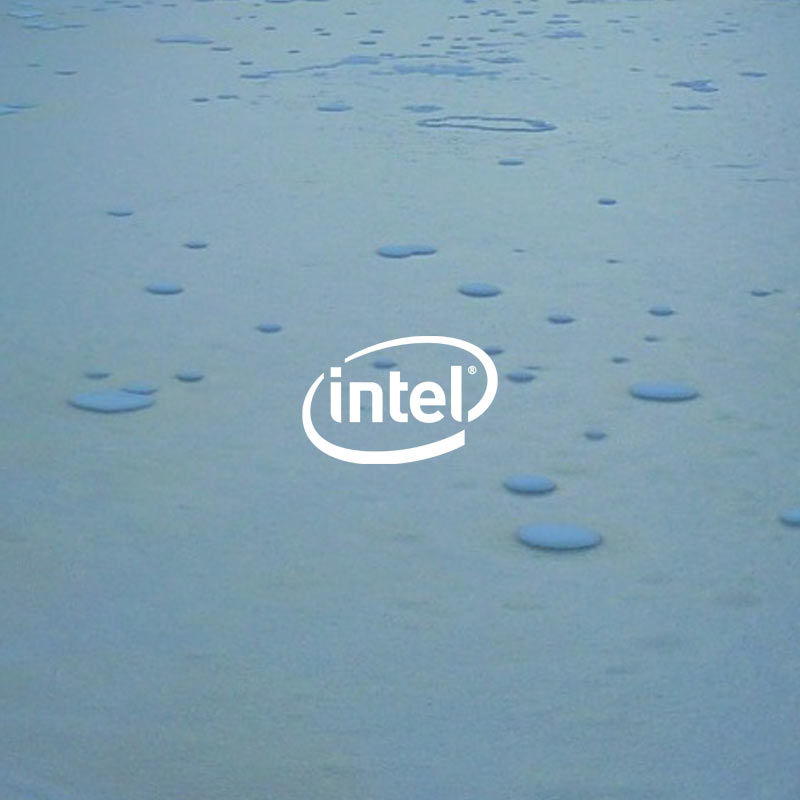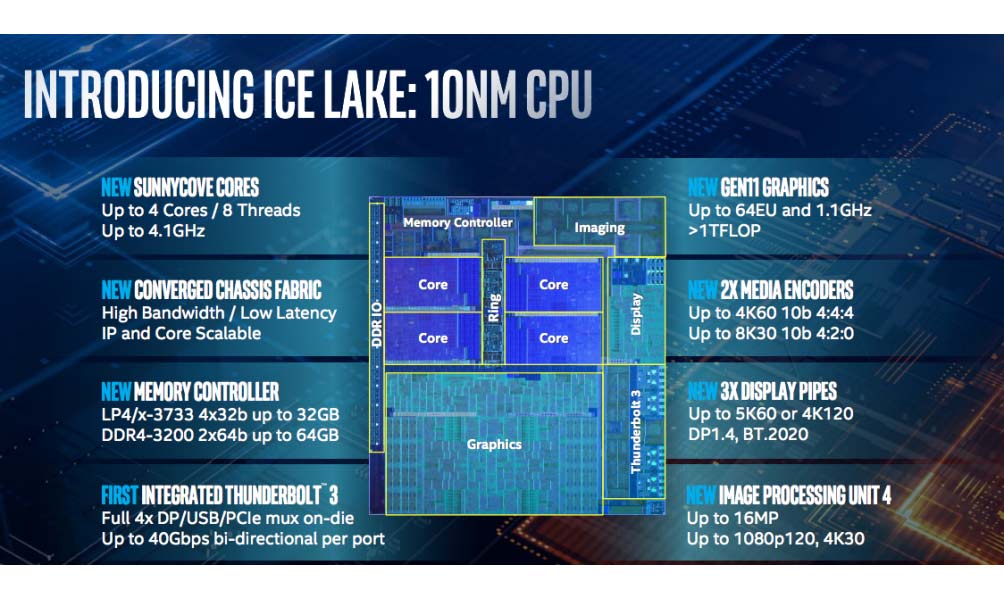
The wait for Intel's 10-nanometer chips is over, but people should not expect any huge performance gains from the 'Ice Lake' processors.
At Computex, the tech giant Intel gave a breakdown of key details around the processors, which according to the its own benchmarks, the processors only offer a measly 5 percent performance increase over the company's 14nm 8th generation "Whiskey Lake" processors, which launched in August 2018.
While this is certainly a disappointment, given by the hype around Intel's 10nm technology, but still sheer speed is not its main focus.
According to Intel, its original goal was to launch the 10nm processor in 2016. However, chip-manufacturing delays thwarted that effort, so the company has instead been refining its 14nm process. And with it eventually releasing its 10nm chips, the company makes it excel is certain workloads.
This is especially true when it comes to AI-powered algorithms that run in the background.
What this means, Intel's 10nm processing chips should make PC software that automatically de-blur photos, transcribe speech into text, or remove ambient noise from your Skype calls, to run a lot faster.
The processor also supports 'AVX 512', which should come helpful to high-powered AI. tasks, like cryptography, or video editing. This instruction set could have a dramatic impact on performance once it becomes more widely adopted.
And when combining the above with Ice Lake’s new support for Vector Neural Network Instructions and Gaussian Network Accelerator, anything incorporating AI could see dramatic improvements in response times.
According to Intel, the processors can run such computing tasks up to 2.5 times faster than older Intel chips. This is also made possible using an embedded capability on board Intel called 'DL Boost'.
Another enhancement on board is the presence of Intel's 'Sunny Cove' architecture, which replaces the company's Skylake architecture - a technology first introduced in 2015. According to Intel's own benchmarks, the Sunny Cove computing cores can complete instructions per cycle on average 18 percent faster than what Skylake can muster.
"Your applications will get faster just by moving to this latest hardware," explained Ronak Singhal, an Intel and CPU architect.
While its sheer performance may not be that big, still, if users are upgrading their five-year-old Intel PC, they can expect the 10nm processors to offer a 40 percent speed increase.
What's more, the processors' another selling point is with gaming, as the processors allow users to play popular titles such as Fortnite and Counter-Strike: Global Offensive at 1080p, without a dedicated graphics card.
This is Intel uses a Gen 11 integrated graphics processor (IGP) silicon on board, which allows the chips can run games at 75 to 100 frames per second, a substantial upgrade from older Intel silicon, which could only muster 30 to 40 frames per second.

As for energy consumption, Intel didn't detail it much. The company also didn't offer any benchmarks on the battery-life front. But one of the company's vice presidents, Chris Walker, said that the chips should offer about twice the battery life of what laptops could offer three to four years ago.
This can be done using Intel's Project Athena initiative, which specifically requires the models to offer at least 16 hours in video playback, or nine hours of web browsing - all on one single charge.
And combine that with software tweaks that allow for on the fly adjustments to memory frequency and screen refresh rate, the 10nm chip should also be able to further increase battery life in laptops.
Intel's Ice Lake chips will be sold as Intel's 10th Generation Core processors and will come in the standard Core i3, Core i5, and Core i7 variants, running up to four cores and eight threads.
They come as 9-watt and 15-watt processors to support thin-and-light laptop models.
With Ice Lake, Intel has also included support to let PC makers add up to four Thunderbolt 3 ports to a single laptop. This redesign allows manufacturers to easily accommodate ports on both sides of the system, similar to Apple’s MacBook Pro implementation.
In addition, simplifying the Thunderbolt design can also reduce power consumption by 300 milliwatt per port when the port is fully utilized.
The same chip can also support Wi-Fi 6 (802.11.ax), which can offer maximum download speeds of around 10Gbps, assuming users have a compliant router and hardware.
